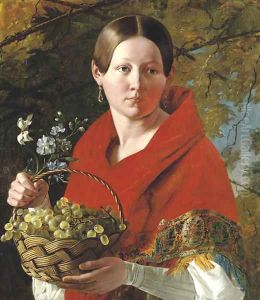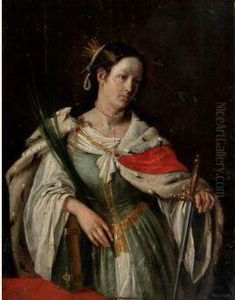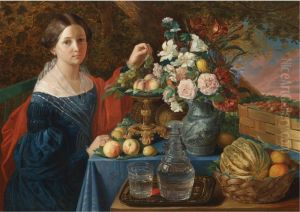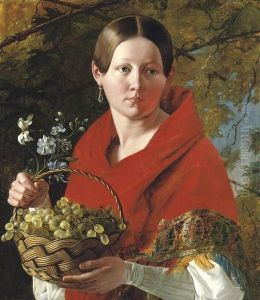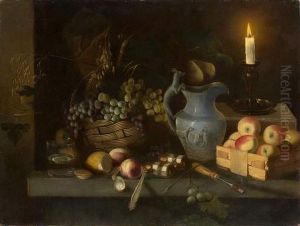Ivan Fomich Khrutskii Paintings
Ivan Fomich Khrutskii was a distinguished Belarusian and Russian artist known for his significant contributions to still life painting in the 19th century. Born in 1810 in Ulla, now part of modern-day Belarus, Khrutskii's artistic journey began in an era marked by a rich cultural renaissance, yet also a time of social and political upheaval. His works, characterized by meticulous attention to detail and a profound appreciation for the beauty of the natural world, reflect the spirit of Romanticism that was prevalent across Europe during his lifetime.
Khrutskii received his formal art education at the Imperial Academy of Arts in Saint Petersburg, Russia, where he honed his skills and developed a unique style that combined traditional Russian artistic values with the emerging trends of European art. His studies and dedication earned him recognition and accolades, including a silver medal from the Academy for his achievements. After completing his education, Khrutskii returned to Belarus, where he spent the majority of his career, deeply inspired by the local landscape and the daily lives of its people.
Throughout his career, Ivan Khrutskii was known primarily for his still lifes, which went beyond mere representation to imbue ordinary objects with a sense of vitality and emotion. His paintings often featured arrangements of fruits, flowers, and household items, rendered with such precision and vibrancy that they seemed to transcend their mundane origins. Khrutskii's work was not limited to still lifes; he also produced a number of portraits and religious compositions, though these are less well-known today.
Despite his talent and the quality of his work, Khrutskii did not gain widespread fame during his lifetime. It was only posthumously that his contributions to Russian and Belarusian art began to be fully appreciated. Today, Ivan Fomich Khrutskii is celebrated as a pioneer of still life painting in Eastern Europe, and his works are held in high regard, featured in museum collections and appreciated by art lovers around the world.
Khrutskii's legacy is not just in the beauty of his paintings but also in his approach to art as a reflection of life's simplicity and complexity. He died in 1885, leaving behind a body of work that continues to inspire and captivate audiences with its timeless appeal and exquisite detail.
